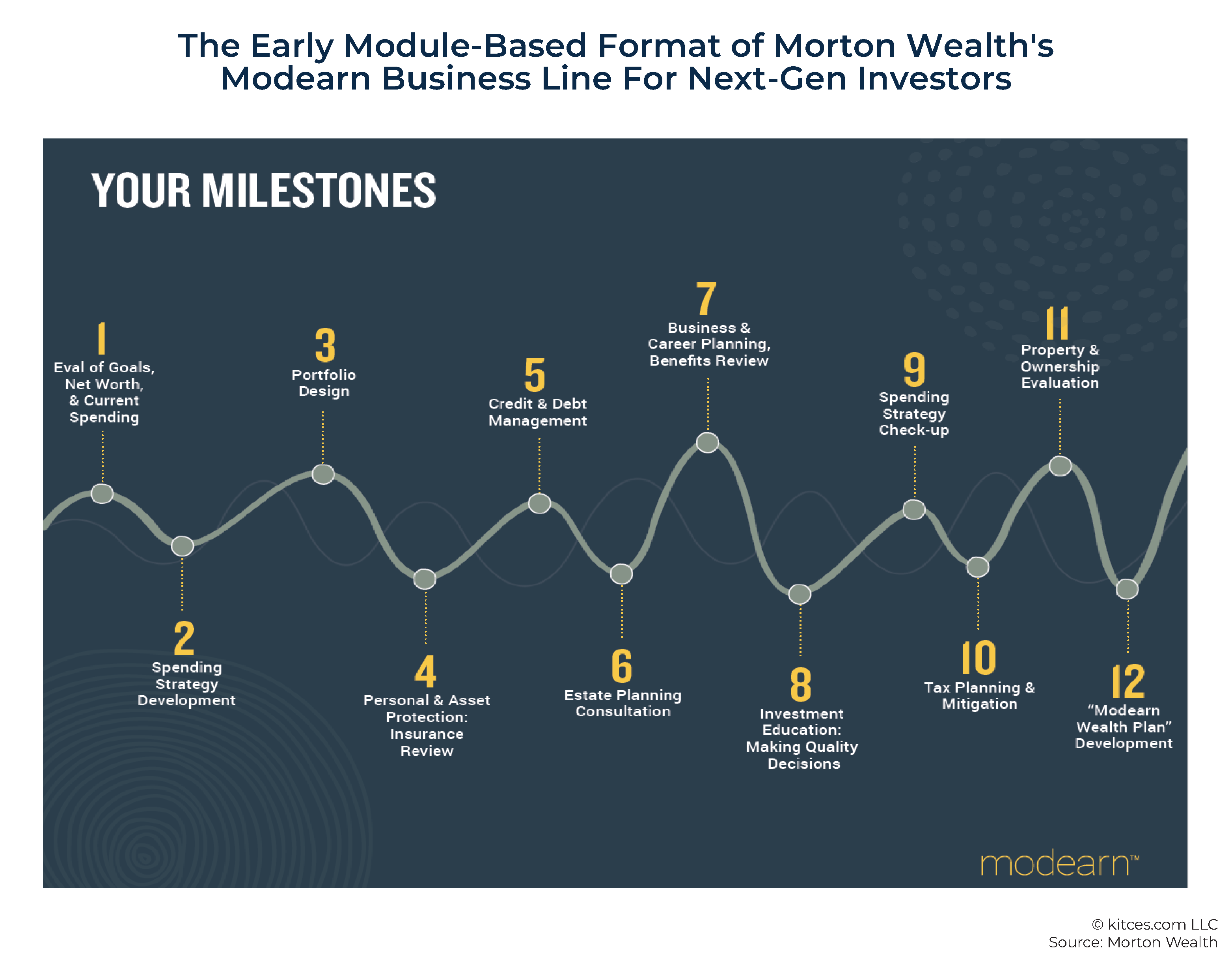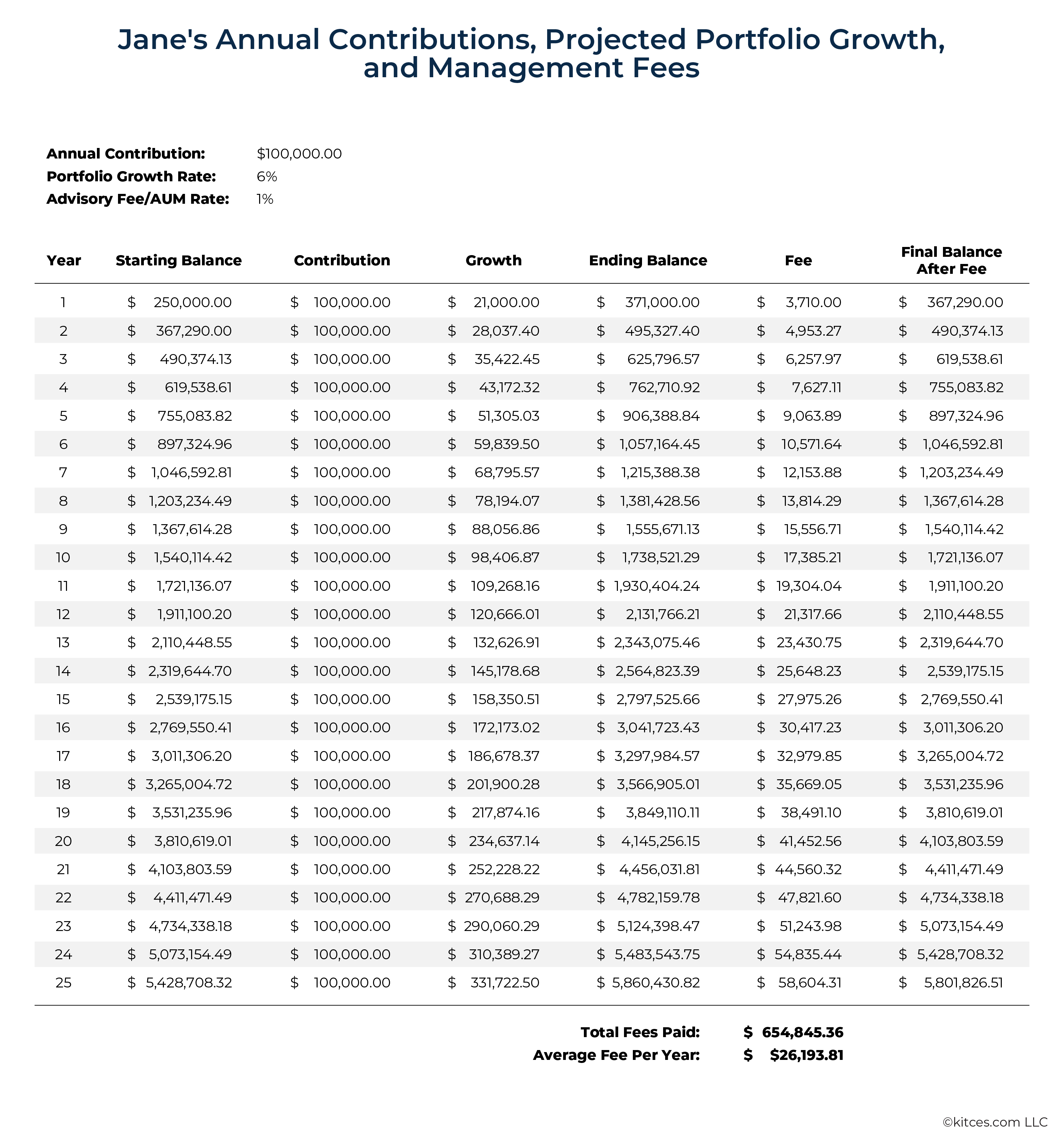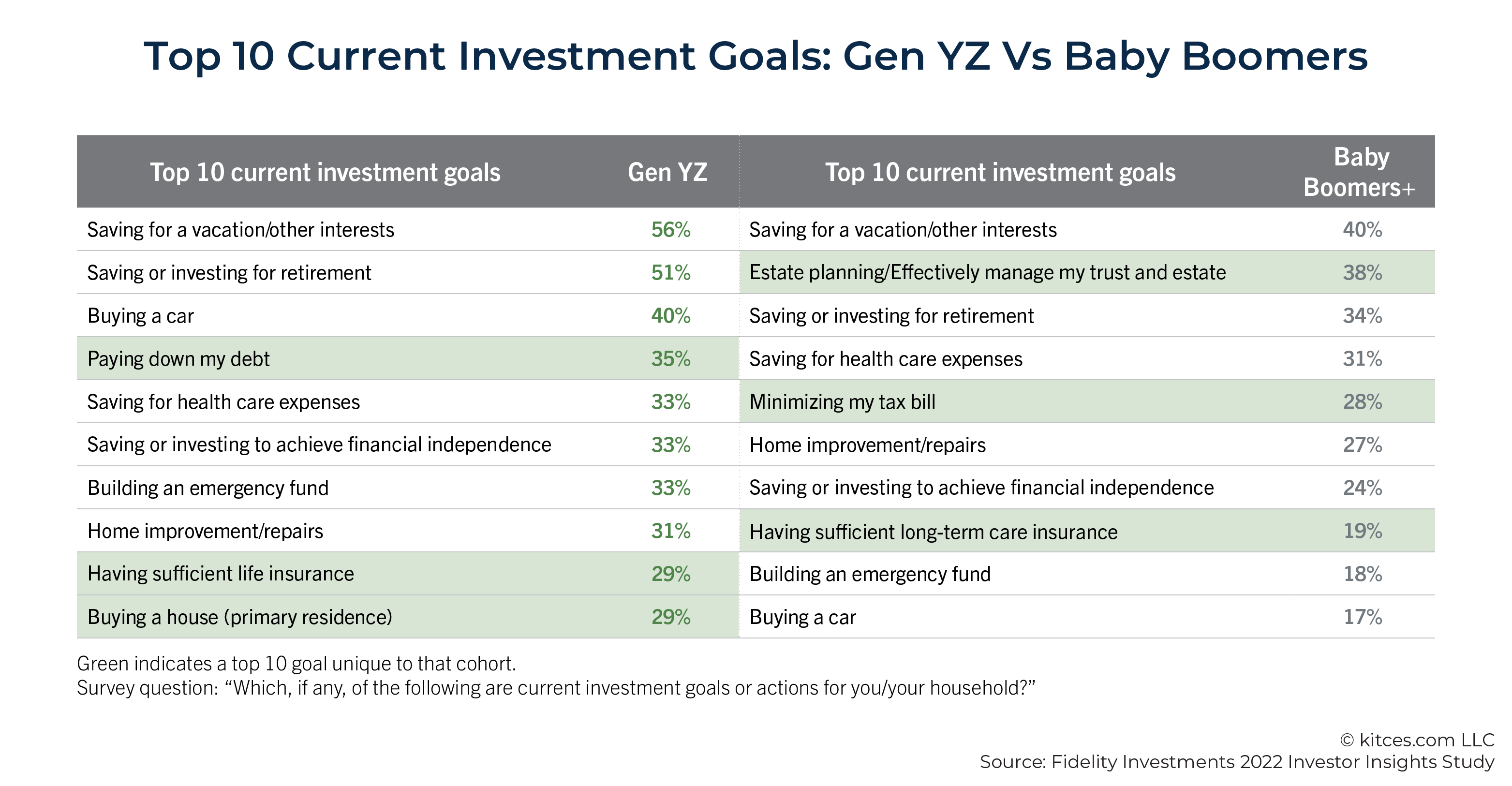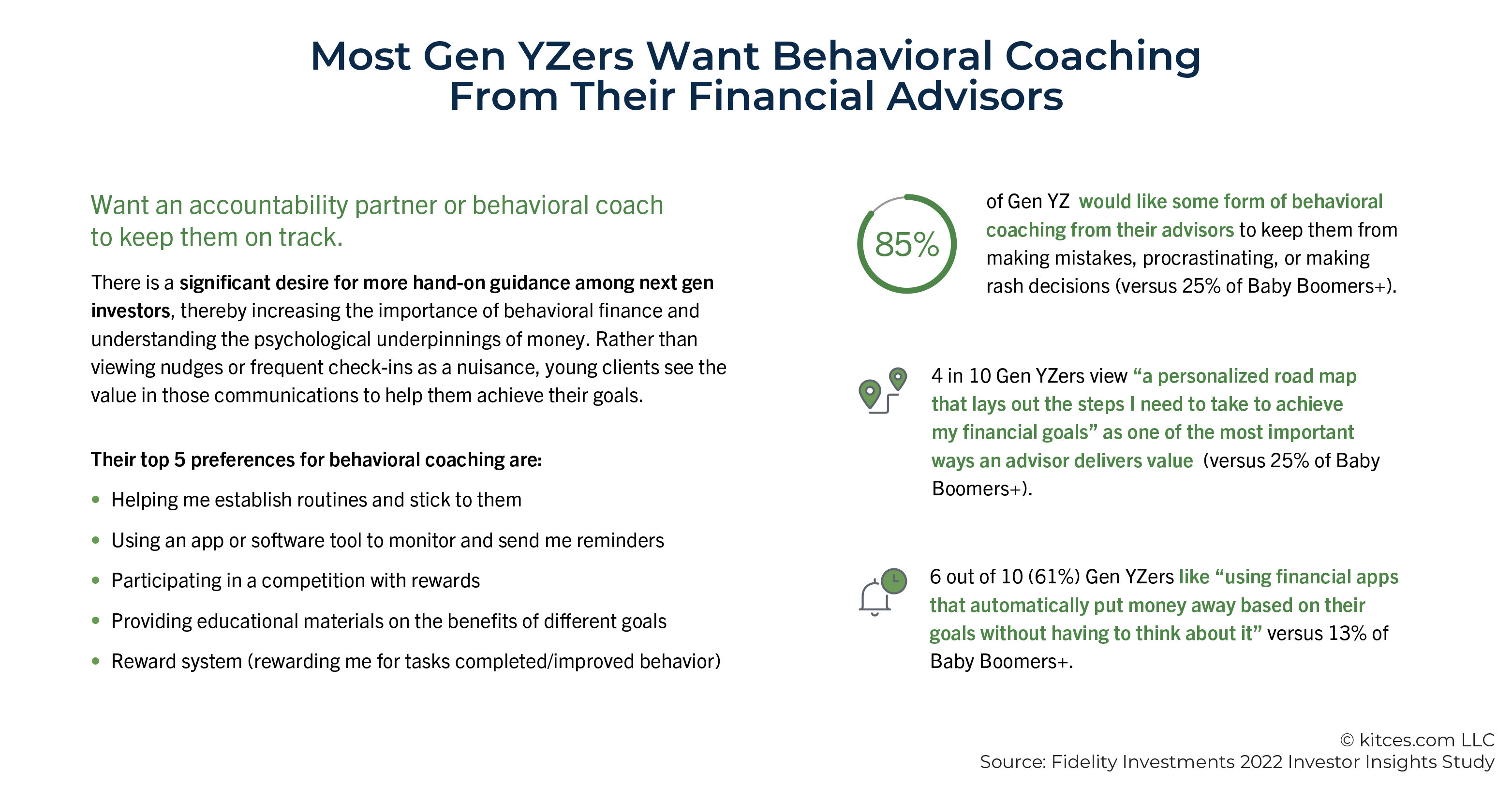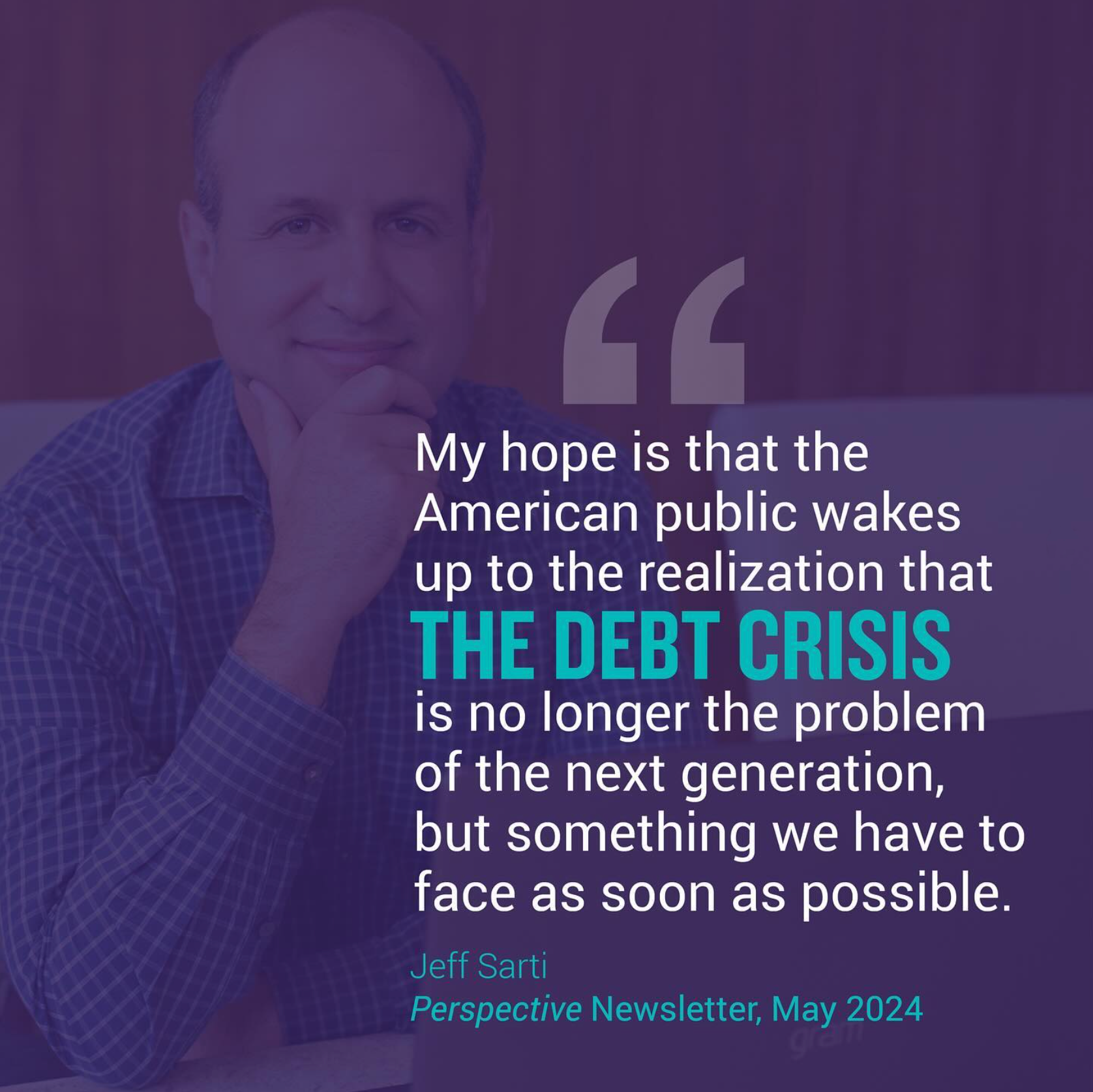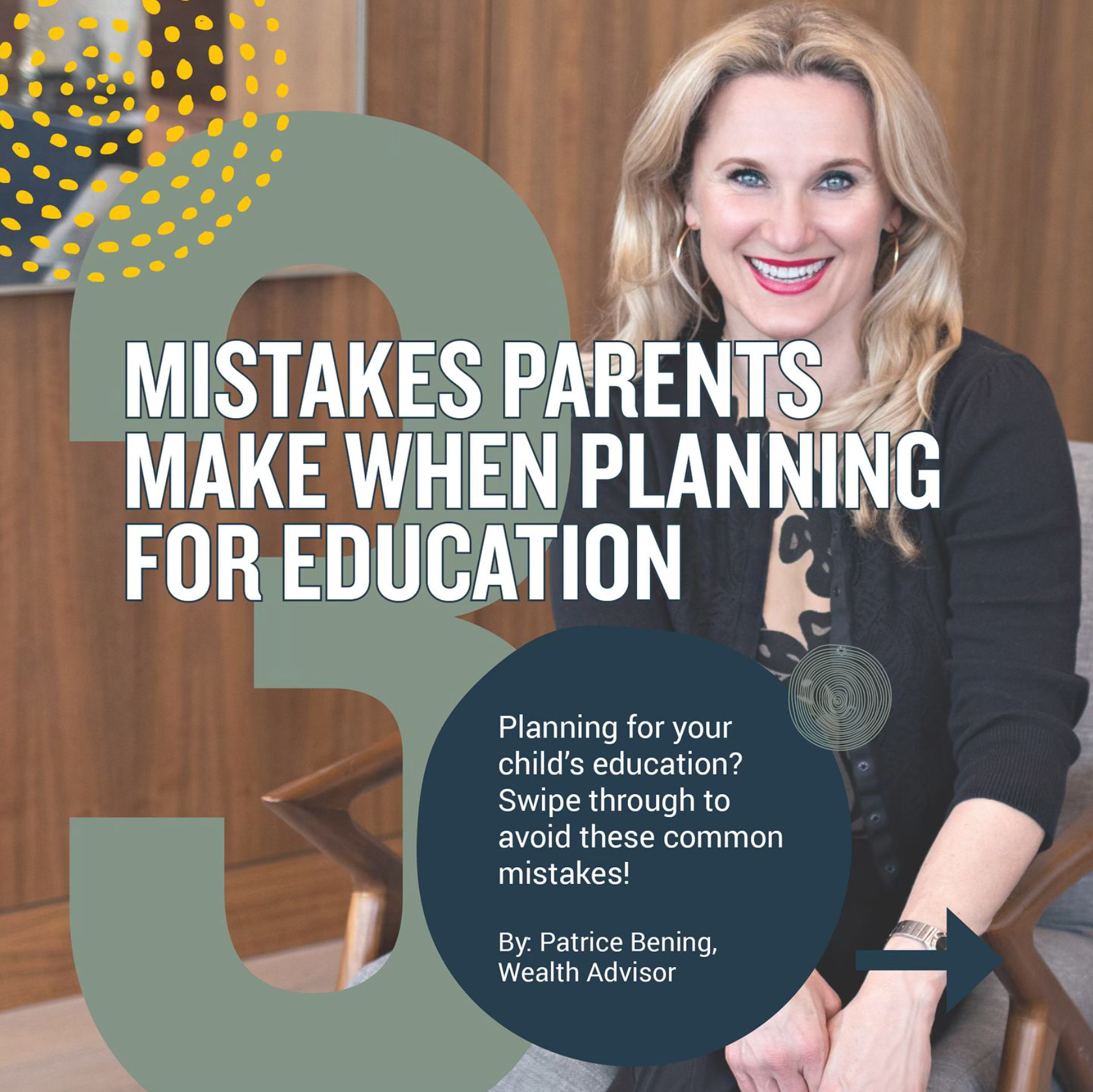Executive Summary
The business model of many financial advisory firms revolves around serving clients who are able to pay a certain minimum in annual advisory fees, which reflects not only the value that the advisor can provide for the client, but also the amount that the advisor must charge in order to provide the level of deep planning and investment management that higher-net-worth clients expect (while also earning enough profit to make the venture worthwhile).
However, because many next-generation clients such as those who are Millennials and Gen Zers are still building their assets up, paying $10,000 or more in advisory fees each year may not be feasible for them… at least not yet. This can create tension with the traditional advisory firm business model, because that minimum fee is often necessary for the firm to break even. As a result, serving next-generation clients may require adjustments to the firm's business model to deliver the services younger clients need while also remaining profitable.
In this guest post, Stacey McKinnon, Chief Operating Officer and Partner at Morton Wealth, shares a new business line her firm developed to serve younger professionals, the challenges that the firm faced in developing a sustainable business model to serve next-generation clients at lower cost than retirees, and some of the lessons her team learned from the experience that could be valuable for advisors who want to develop their own next-generation offerings.
At a high level, the challenge of serving next-generation clients is that, although they may not be able to afford higher fees, their financial needs are just as complex – if not more so – than those of retired clients. Importantly, serving next-generation clients effectively doesn't mean just offering fewer or more automated services (e.g., robo-managed portfolios) at a lower fee. Instead, it involves focusing on what clients value most and delivering that value efficiently, without adding unnecessary services that the client may not need or want. For example, most Millennial and Gen Z clients can open their own investing account and buy index funds online with only minimal guidance from their advisor, so full-service investing might not offer enough value to a next-generation client to justify an ongoing planning fee.
However, many next-generation clients have their own unique planning needs – ranging from equity compensation and tax planning to managing debt and even addressing ongoing anxiety about money and wellbeing. Advisors who can focus on and help resolve these issues for clients can prove incredible value to their clients. This, on one hand, requires deep expertise, meaning the firm may need to ensure its advisors have adequate experience and training to handle complex planning strategies that may be beyond the capacity of a relatively junior advisor. On the other hand, by focusing on a few key planning areas, the firm can deliver value more efficiently than one that tries to be "everything to everyone".
The key point is that while serving next-generation clients profitably may be more challenging in the short term, there's significant long-term potential in working with clients who are still accumulating wealth – and who may eventually inherit wealth from their parents. Because ultimately, many of today's high-net-worth retirees were once part of the 'next generation' themselves. Which means that advisors who can deliver value, build trust, and maintain strong client relationships today are positioning themselves to serve the high-net-worth clients of tomorrow!
Advisory firms have long been established to help clients who are already wealthy, and the result of this has been that those who still need to build wealth are largely neglected. This isn't because our industry thinks less of those in the accumulation phase; rather, it is because we don't know how to serve them profitably. For someone who is 35 years old, with $300,000 in assets and making $250,000/year, a fee of $10,000/year feels steep. Yet, for advisory firms, that fee is what we need to break even. Hence, we hit a stalemate.
Our mission is to empower better investors of all ages, which is why, in 2021, my team at Morton Wealth became determined to crack the dilemma of serving younger clients who may not yet have many assets. Solving this problem is crucial for our business, as we need next-gen clients for a few reasons:
- We are a 41-year-old firm, so our demographics are a reflection of our age. With an average client age of 70, our clients tend to be in the decumulation phase, depleting their portfolios rather than building them up. Which means we have a withdrawal problem. We need around 3% in additions each year just to make up for the withdrawals. So, attracting younger clients is vital for our future growth.
- We feel that the next generation of investors won't necessarily invest the same way as the past generations. The 50-and-under crowd tends to want less in the way of traditional investments (they can access most of the stock/bond market on their own) and also wants more planning services, including coaching, behavioral advice, and access to alternative investments (like real estate or impact-oriented opportunities).
- The profile of the next generation is changing – many will inherit wealth as opposed to building it themselves – and the demographics are different, with a significant increase in female investors.
Taking all these factors into account, we launched a new business line in 2023 called "Modearn" (where "earn" represents people in their earning years as well as our target market's desire to earn passive wealth through investing). It took us 2 years to design a model that we felt would resonate with next-gen investors, who we define as people ages 30–50, making $200k–$800k per year in joint income and who have generally accumulated $200k–$800k in assets.
In designing this offering, we took into consideration a few main factors about this demographic:
- Their lives are busy and complex. We knew they wouldn't have time to go through a comprehensive planning process, so we needed to make the offering easy for the client.
- Many of these clients are business owners, start-up founders, or tech professionals, so their assets are largely tied up in equity. This would require us to be more knowledgeable about the planning strategies they needed.
- While next-gen investors use technology, it isn't a driver in their decision to hire an advisor. They are looking for human connections, customized advice, and time with their advisor. This means that robo-advice wouldn't be an effective option if we wanted to have longstanding relationships with these clients.
Taking all of these factors into account, we launched the first version of this offering as a module-based system, where each module addressed a different aspect of the client's overall plan. The idea was to tackle one module per month, eventually completing a comprehensive plan but with smaller digestible touch points:
We developed a proprietary "spending strategy" workbook that allowed us to evaluate the client's income, expenses, net worth, and goals to flag issues and develop short-term strategies. We don't use financial planning software or run long-term projections for these clients, so we are able to keep costs lower but still provide key advice, like how much to contribute to a 401(k) plan, 529 plan, HSA, or personal savings account, or how to manage student loan debt. We valued this service at $6,000 with a separate fee option for investment management. While a few clients scoffed at the fee, we could easily justify the cost through tax savings strategies and other recommendations that put dollars back in their pockets, making the planning fee more palatable for the client.
Fast forward one year, and we've learned a lot. While the original concept worked well in theory, in practice, our client's lives are not this regimented. We found ourselves skipping all over the place with the modules depending on the unique circumstances of the client. We also found that the modules felt a little like a product we were selling when the real value came from the partnership between clients and advisors. When we asked clients for feedback, they would say things like "We finally don't feel alone in our decision making" and not "The modules helped me feel organized and set up for success," which we thought was a big value driver.
For Modearn 2.0, our messaging and value proposition will be much more focused on the value of advice and partnership versus the value of the modules. In addition, there are pieces of the offering that we are restructuring to work better internally and help create buy-in amongst our team. In an effort to help others who are also embarking on a next-gen solution, I've shared the key lessons learned that we are taking into consideration for Modearn 2.0.
Lesson #1: Next-Gen Clients Will Not Be Profitable For A Few Years
One of the largest deterrents to a next-gen offering is the fact that most firms are breaking even at $9k–10k per client. The costs of managing advisory practices have skyrocketed during the last few years – from wage inflation to technology costs, consultants, and insurance; everyone is feeling the burdens of a high inflationary environment. This makes it especially painful for advisors to take on clients they know won't be profitable.
However, when launching a next-gen offering, it is important to look at the long-term profitability of the client, not just the short-term. In short, your decision should factor in recurring revenue above all else.
Consider the following example:
Example: Jane is 35 years old and pays $6k in her first year as a client with a financial planning advisory firm to cover upfront planning. Jane's portfolio has an average growth rate of 6%, and she pays an annual fee of 1% of her ending balance at the end of the year.
Jane contributes $100,000 every year for 25 years until she reaches age 60. At that point, assuming a constant growth rate, her portfolio balance is estimated to be approximately $5.8M, and she will use these assets to fund her retirement.
The graphic below illustrates her projected portfolio growth and management fees with the firm.
While the firm requires minimum revenue of $10,000 from the average client on an annual basis to be considered profitable, Jane won't break even with the firm's profitability standards until year 6.
But even though Jane's advisory fee in Year 1 was only $3,710, because her fees grow each year as her portfolio grows, the firm's recurring revenue from Jane's fees actually averages about $26k/year over 25 years. In total, the firm would make around $600k from Jane's fees.
By looking at the average fee versus the starting fee of a next-gen client, you can see that these clients can add a lot of revenue over time.
If advisors wait until clients reach age 60 before they try to attract them, they will risk 2 big-ticket items:
- These clients will likely already have an advisor, and
- The advisor will be managing the client during their portfolio withdrawal phase, not their portfolio addition phase.
Now, it may not be possible for all next-gen clients to contribute $100k each year, but there is an easy way to determine the breakeven point based on a prospect's facts before bringing them on as a client. Use Chat GPT 😊 – just ask it to do the calculation for you by prompting it with something like the following:
I have a client age X with $XXX in assets, who will add $XXX annually to their portfolio. The portfolio will grow at X% and they will pay X% in fees based on the total portfolio balance (including contributions). How much will the client have accumulated by age X? Please put the results in table format, with 6 columns that show the following: Age, Portfolio Balance at Start of Year, Contribution, Growth, Fees Paid, and Final Balance After Fee. Please display all dollar values as currency. Separately, please also calculate the total fees paid over the entire period, and the average fee per year.
You'll have your answer in seconds, and then you can determine if the average fee would make it worth it to bring a prospect on as a client.
Lesson #2: Next-Gen Clients Want To Pay For Advice They Can't Get Online
There is a reason DIY investing is so popular – it's easy. For anyone willing to self-educate, it is fairly simple to open an account and buy index funds. This makes the need for a financial advisor to have a good value proposition that much greater. Advisors will have to differentiate themselves from robo solutions to attract next-gen clients. In fact, they even have to differentiate themselves from the firms charging 0% AUM fees with flat-fee planning services, which is a signal that even some advisory firms often don't value model portfolios as much as planning services.
Additionally, most next-gen clients don't actually know what financial planning is, so it can be hard for them to see the value before actually experiencing it themselves. When we first launched Modearn, we assumed that clients would immediately understand the value of the modules. However, they don't know how or why all of the areas of financial planning are interconnected. They have a 'person' for tax and a 'person' for insurance, but those people don't ever talk to one another. Therefore, one of the first things we talk about in prospect meetings is the value of having an advisor look at all the dimensions of a client's life when offering advice. This reframe really helped bring the process together and offered an "ah-ha" moment for the clients.
In addition to partnering with clients on planning needs, we found that many next-gen clients really wanted to work with someone who can offer outside-the-box investment opportunities. By offering stock or bond alternatives, we helped them see why they would need an advisor to help them gain access to more investment opportunities. Next-gen clients tend to be a little more risk averse, likely because they lived through the great financial crisis during a pivotal time in their lives, so they are interested in learning about diversification and risk mitigation strategies.
And finally, next-gen clients are looking for human connections. While they respect the letters behind an advisor's name, they are not wowed by them. They care much more about whether or not an advisor is likable than the number of specializations on their resume. These clients are looking for an advisor to be integrated into their lives; they want to see them as a friend, confidant, and partner, not as a professional who doesn't relate to them. From their perspective, there is no point in hiring an advisor who is just going to put them in a robo-solution; they need much more than that.
The conundrum with this is that it uses an advisor's most precious commodity – time. To solve for this issue, we had to figure out how to leverage time more effectively (which we discuss in Lesson #4 below).
Lesson #3: Advisors Should Be Trained/Knowledgeable In Financial Therapy To Best Service Next-Gen Clients
Next-gen clients tend to be more inclined to explore the 'why' behind their money habits and are willing to spend time understanding how their mindset impacts their decisions. These clients don't just want quick fixes and/or strategies that make them wealthier; they are also acutely aware that money doesn't always buy happiness.
As advisors, we know that behavioral science plays an important role in how successful clients will be with their financial/investment plans. With next-gen clients, education has to go beyond behavioral biases (like recency bias or anchoring) and address issues that are very important to their mental health and well-being.
For example, many next-gen clients might feel the following:
- Shame that they are not further ahead in their financial position;
- A deep desire for a You-Only-Live-Once (YOLO) lifestyle with the sudden (or recent) realization that they can't do that forever;
- Fear that advisors will put them on a budget that will take away from life enjoyment;
- Conflict with their significant other around how to spend or save money; or
- A disconnect between their values and how they make financial decisions.
When we first started working with these clients, we were ill-prepared to navigate the complexities and honestly failed at digging deeper to figure out the real issues. Since then, we have spent time role-playing to navigate these complexities and started openly sharing challenges with our advisor peers. By practicing the 'therapist' role, our team is much more patient and thoughtful when clients open up to us. We also try to acknowledge our own experiences and biases so that we don't project those experiences onto these clients. Because the conversations are deeper and more open, we've needed to refine our approach and skills.
Ultimately, at the center of the conversation is the lifelong struggle to balance what we call "current me versus future me". "Current me" wants to live for today and spend everything I make on enjoying life. "Future me" also needs to have money to spend, but the future seems far away, and there is a perception that time is on my side, which means the needs of "current me" tend to be prioritized. Fidelity even did a study on goals for Gen Y and Gen Z versus Baby Boomers, and what is interesting is that lifestyle goals are ranked higher.
For example, Gen YZ are more interested in vacations than Baby Boomers. Conventional wisdom might say that Baby Boomers are retired and are therefore more interested in vacationing. However, we see from the below data that younger people are mostly interested in how their wealth can help them enjoy life.
Also, an interesting part of the study highlighted next-gen investors' desire for behavioral coaching:
While these clients do want support planning for "future me", they acknowledge that they need a partner to help them make good decisions today. In addition, they are looking for a highly personalized experience. Which, as discussed earlier, is in direct conflict with the profitability models and typical robo-solutions that many firms use to try and service these clients.
Lesson #4: Next-Gen Clients Will Likely Take The Same (Or More) Time Than Existing Clients
Of all the learning lessons, Lesson #4 has been the most challenging to master. While we want to leverage efficiencies, the truth is that next-gen clients have complex lives, and part of the value proposition is that our advisors will be there to help them navigate the complexities. In addition, these clients are used to getting answers with speed (Hello, handheld computer!), and they tend to want their advisor to be 'on call' at the onset.
This has led us to rethink how we set expectations with clients and reevaluate how to use technology in a way that is personal but still efficient. For example, here are some systems we have in place:
- Use of a texting service (like Zoom phones), which needs to be compliance approved, or an app (like Fynancial) that has a chat feature. By communicating via text or chat, we eliminate most meetings and solve problems much more quickly.
- Because we serve in a role not unlike a 'concierge doctor' with our next-gen clients, it is important for us to let them know how communication will work. As part of their onboarding package, we help them understand that while we are there to partner with them, that is different than being 'on call' for them. We also set communication standards in our proposal so that they understand how we plan to work together. For example, we tell clients that our standard response time is 24 hours Monday through Friday; that way, they won't expect an immediate reply.
- Since it is nearly impossible to do a comprehensive plan from the onset (next-gen clients are too busy!), we spread out typical financial planning activities and solve one problem at a time (while considering the implications). This helps us keep our clients' attention, work more efficiently, and save everyone's time.
The Modearn clients we have served are excited to learn and get their financial plans on track, which means we've had to dedicate more time to education. Next-gen clients may take more time, but the difference we make in their lives will reflect that commitment. While this generation has access to a wealth of information, it doesn't mean they have financial education. As advisors, we act as educators, therapists, and strategists, so recognizing the time it takes to serve our clients effectively is key.
Lesson #5: Junior Advisors With Less Than 3–5 Years Of Experience Are Likely Not Skilled Enough To Service Next-Gen Clients
While it may be tempting to rely on junior advisors to address the greater time investment that next-gen clients need (mentioned in Lesson #4), I highly discourage this strategy. Unfortunately, while a junior advisor might cost less hourly, that lower cost also comes with less experience and a lack of knowledge that next-gen clients need.
For example, it is much harder to advise a client how to buy a house when the advisor has never bought one themselves (or worked with other clients in similar situations). This is a fairly simple example, but we have encountered much more complex planning strategies with our Modearn clients that junior advisors would struggle to advise on, like the following scenarios:
- RSU and ESPP planning
- Small business tax planning
- Private placement life insurance
- Legal entity structures and their tax implications
- Lending/debt options for entrepreneurs
- Creative education planning structures (e.g., prepaid 529 plans, using cash value, etc.)
While it may not be ideal to utilize a senior planner/advisor's time to work with these clients, it may be necessary. However, just because a senior planner/advisor is involved, it doesn't mean they need to do all the work. We learned that it works best to have a seasoned junior advisor work as a 'second' across all Modearn clients so that they can help service, execute analysis, and be the primary communicator with these clients. In this scenario, the clients still have access to the expertise of a senior member of the team but work with another team member on a regular basis.
Another option is to create a career path/education program to train next-gen junior advisors to help them understand the complexities of next-gen clients. In either scenario, a senior member of the team will need to be engaged and dedicated to ensuring that clients are getting the best possible advice.
Lesson #6: Start With A One-Year Commitment, Not An Infinite One
While the ideal scenario is that next-gen clients will work with us for the next 50+ years, that type of commitment is way too big of an ask.
For most young people, financial planning and investing can be intimidating. Since we are not taught about finances in schools, we usually don't know what good versus bad financial advice looks like. It takes time to learn about strategies, understand big concepts (that often sound like jargon), and feel the impact of the advice being given. Hence, asking next-gen prospects to sign up indefinitely might cause them to say "No thanks" before even getting started.
The best way to start with a next-gen client is by helping them get their financial house in order – like doing a spring cleaning. Consider charging more for Year 1 and then offering more flexible payment options for advice they need along the way. Many next-gen clients are comfortable DIYing for a period of time after getting help with the setup process. As advisors, if we are willing to help get them started and set them on track, it is highly likely that they will come back when they either have the complexity or AUM to hire an advisor full-time.
Lesson #7: Next-Gen Clients Won't Come Knocking At Your Door (Even If They're Children Of Existing Clients!)
Advisors thinking about launching a next-gen offering to attract the children of existing clients might find it to be a harder lift than they think. There are a few roadblocks to this method, including the following:
- Next-gen clients do not necessarily trust their parents' advisors. They generally perceive advisors to be outdated and untrustworthy (I blame "The Wolf of Wall Street" for this one!).
- Some advisors have a digital presence that looks boring and stodgy. Next-gen clients are likely to meet an advisor online before they meet them in person, so the advisor's website needs to be modern and attractive.
- Existing clients might ask their advisors to help their children for free, so charging fees might create unnecessary conflict with good clients.
- Start with a shorter time commitment to give next-gen clients a chance to understand the process – and value – of services (See Lesson #6 above); these clients often "don't know what they don't know", so they probably won't understand the value until they experience it.
We've experienced all of these scenarios in our own attempt to attract the children of existing clients to our firm, and it was certainly not easy to navigate. While our intentions are good, it hasn't been as easy to appeal to these new clients.
To solve this problem, we've put a few key marketing strategies in place:
- We designed "Modearn" to look different than "Morton Wealth" and are treating the offering as a sub-brand of our parent brand.
Here is an example of how the Morton Wealth brand is visually communicated:
And here is an example of the Modearn brand:
The "Modearn" brand focuses on topics relevant to people ages 30–50, while the Morton Wealth brand tends to speak to an audience more focused on investments.
- We have an Instagram account and YouTube page with content relevant to this demographic. This has helped us speak the "next-gen language" and offer solutions more relevant to them.
For example, below are a few recent episodes from our "Couchside Conversations" series, which focuses on topics that might be discussed while at a friend's house, sitting on the couch:
- Our messaging is communicated in a way that doesn't make them feel like they are working with their parents' advisors. We speak about "current me versus future me" and some of the other goals that are specific to their needs.
- Our advisors are diverse and relatable – next-gen clients care about selecting advisors that look, think, and act like them (e.g., they may have a preference to work with a female or male advisor).
- We educate on the difference between "Google advice" and personal advice. This helps next-gen clients recognize the value in advance of making a commitment.
And finally, our compensation model supports the growth of this business line by paying sourcing bonuses across our entire organization to staff. Since our firm has fairly young professionals, a lot of our growth has come from internal referrals.
Launching a successful next-gen offering requires advisory firms to reimagine service offerings, marketing strategy, and short-term profitability targets. Modearn 2.0 is underway now, and we are gaining traction with new messaging, a mindset focused on the long-term potential, and some internal efficiencies we've adopted along the way. While it may not be easy to service this generation of clients, it is worth the mission. I believe that if more people feel confident in their financial decisions, our world will become a happier and better place.


